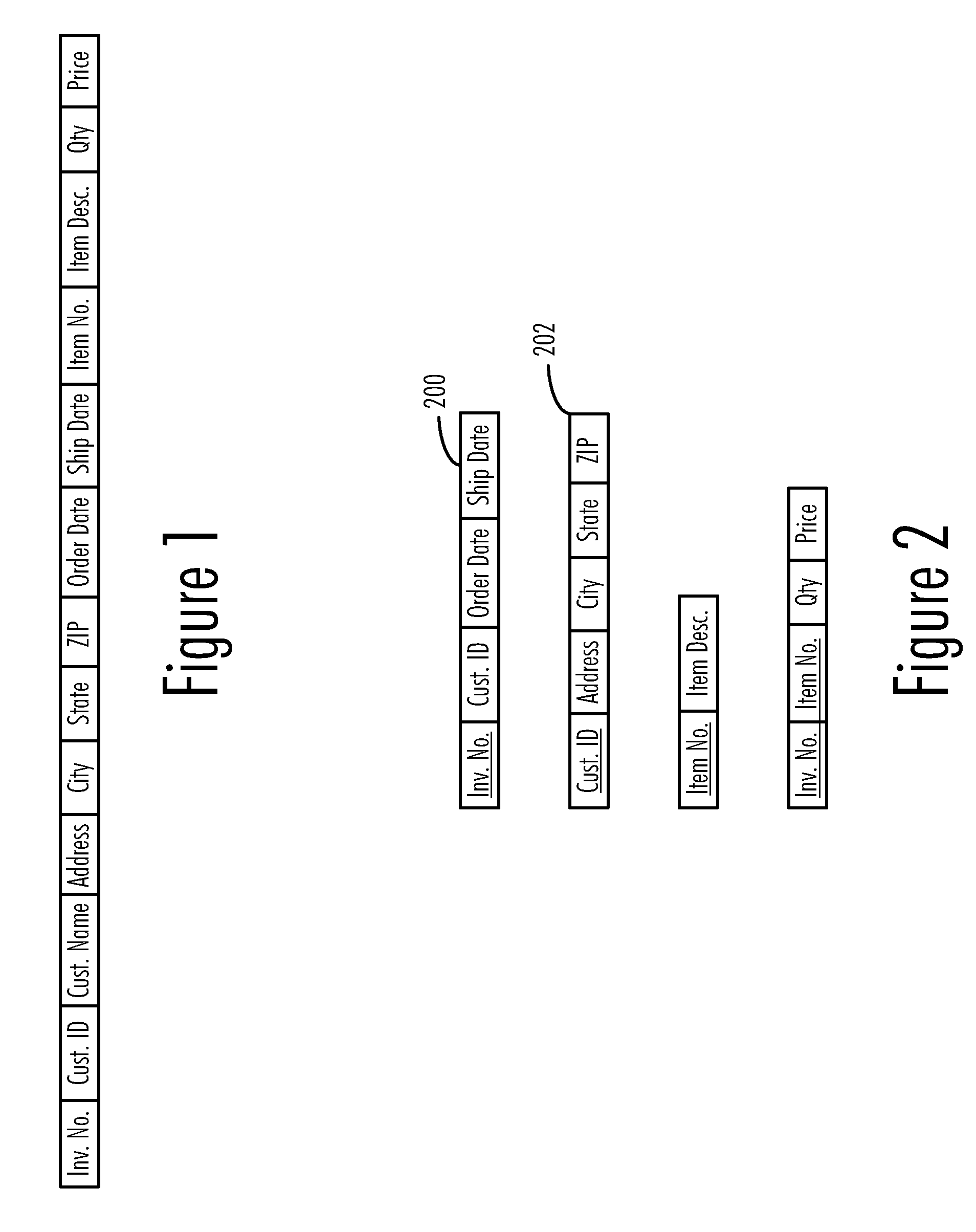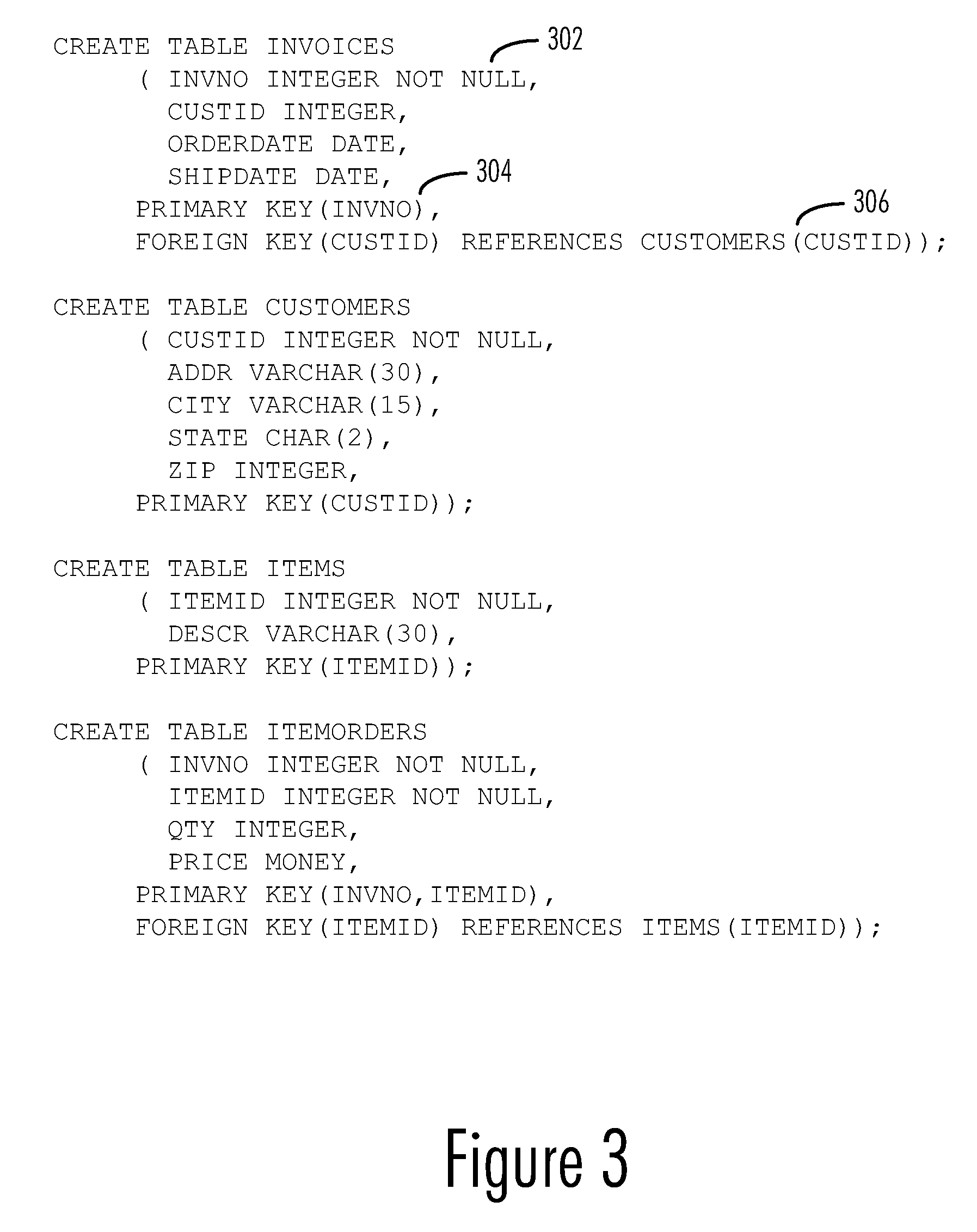Automated latent star schema discovery tool
a discovery tool and automatic technology, applied in the field of automatic and/or computer-assisted database design, can solve the problems of significant amount of redundancy, inefficient sort of single-table database, and complicated data alterations
- Summary
- Abstract
- Description
- Claims
- Application Information
AI Technical Summary
Benefits of technology
Problems solved by technology
Method used
Image
Examples
Embodiment Construction
[0038]The following is intended to provide a detailed description of an example of the invention and should not be taken to be limiting of the invention itself. Rather, any number of variations may fall within the scope of the invention, which is defined in the claims following the description.
[0039]FIG. 8 is a flowchart representation of a process of identifying a latent star schema structure in a relational database in accordance with a preferred embodiment of the present invention. As a preliminary step, a measure of “table size” for each table in the relational database is determined so that subsequent scoring of database tables is performed only on tables of or above a pre-determined (possibly user-defined) size, so as to reduce the number of tables to be considered (block 800). Here “table size” may be defined in a number of ways. One particular definition is the number of table rows (tuples) multiplied by the average column size of the table. Other suitable measures include, ...
PUM
 Login to View More
Login to View More Abstract
Description
Claims
Application Information
 Login to View More
Login to View More - R&D
- Intellectual Property
- Life Sciences
- Materials
- Tech Scout
- Unparalleled Data Quality
- Higher Quality Content
- 60% Fewer Hallucinations
Browse by: Latest US Patents, China's latest patents, Technical Efficacy Thesaurus, Application Domain, Technology Topic, Popular Technical Reports.
© 2025 PatSnap. All rights reserved.Legal|Privacy policy|Modern Slavery Act Transparency Statement|Sitemap|About US| Contact US: help@patsnap.com



